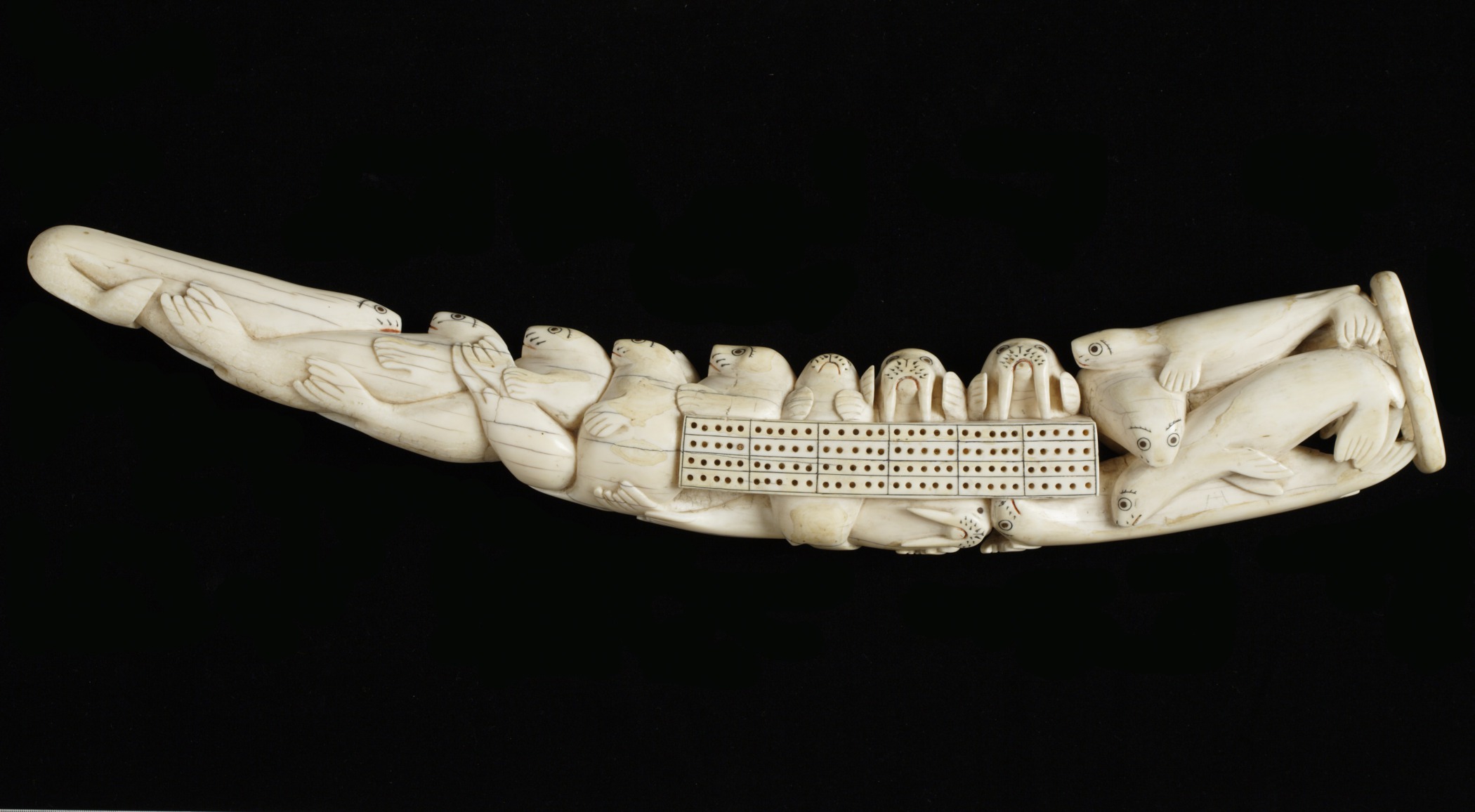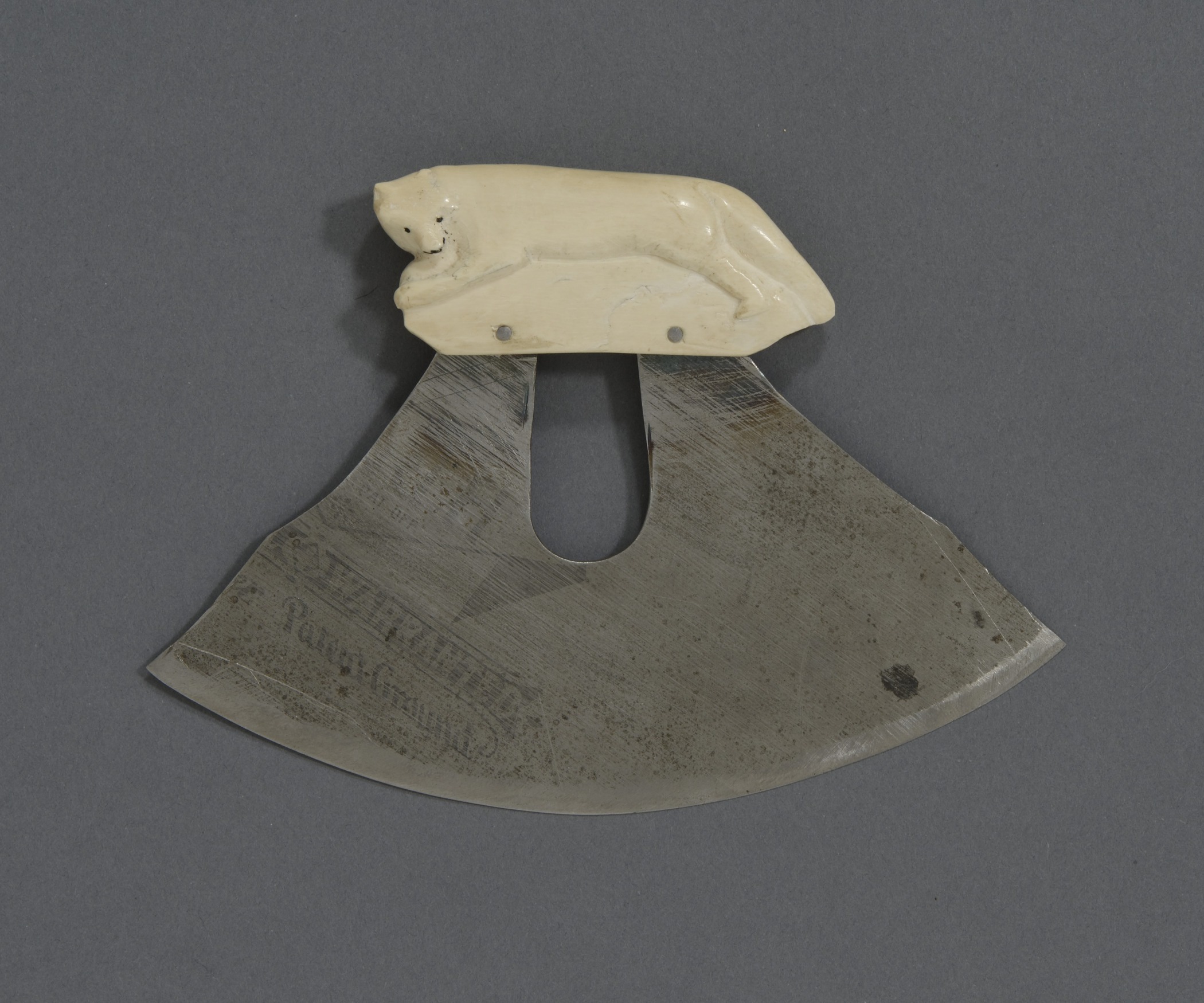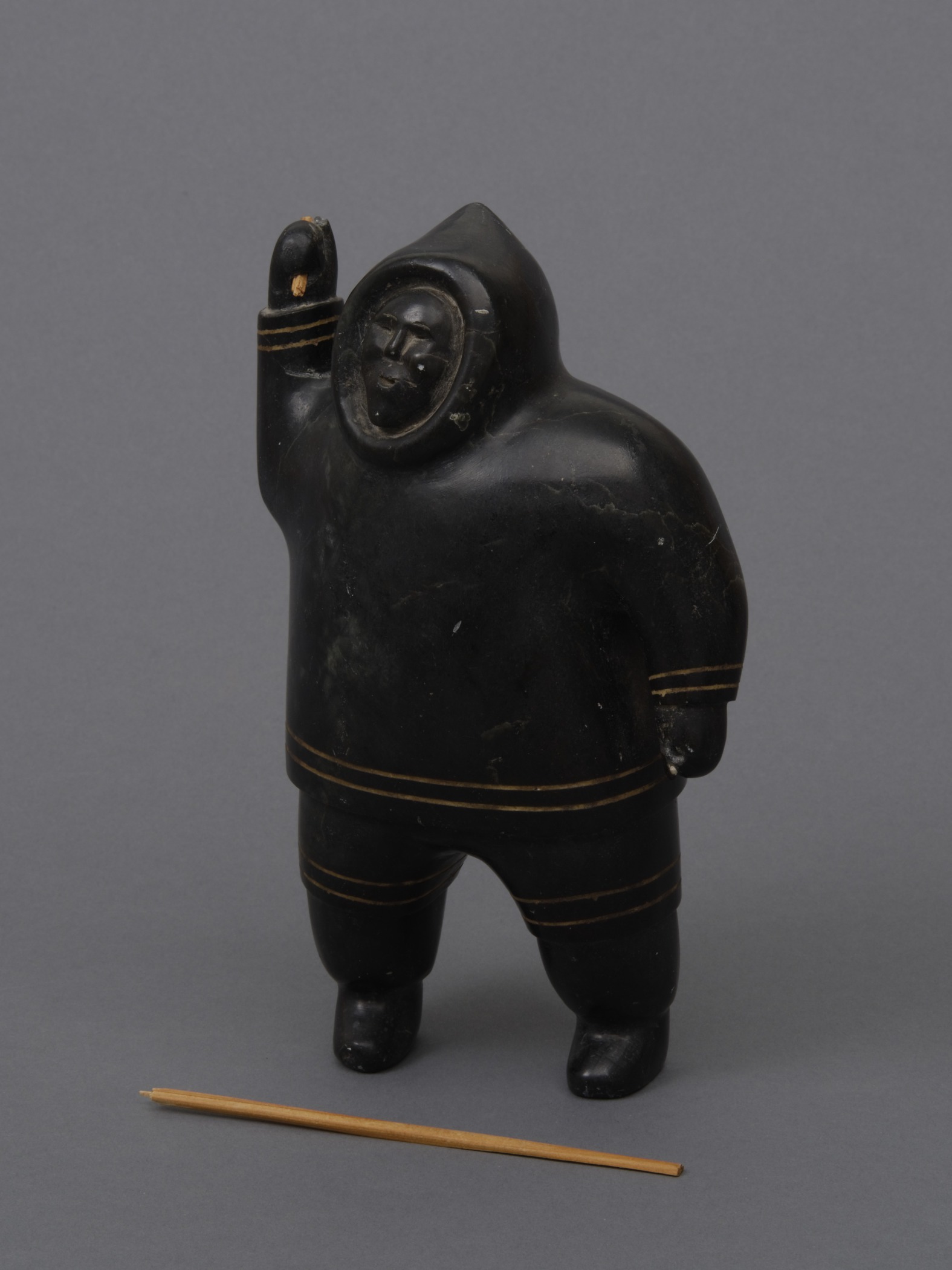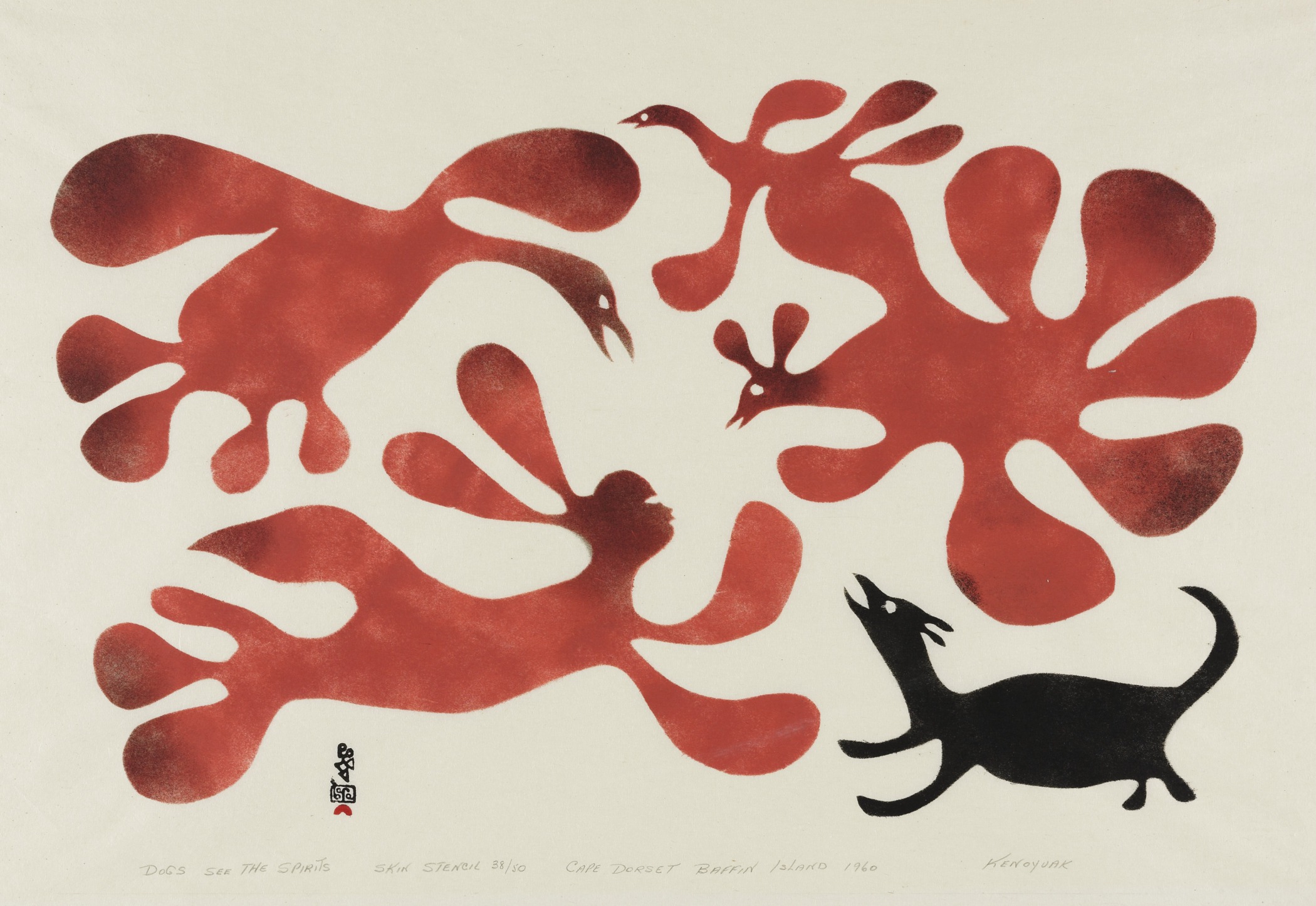Akeeaktashuk, Canadian (Inuit), 1898–1954
Man in Parka Holding a Spear
- About 1952
- Serpentine, darkened with shoe polish, with plastic inlay
- 8 3/4 × 5 1/8 × 2 15/16 in.
Hood Museum of Art, Dartmouth College: Bequest of Evelyn Stefansson Nef; 2014.17.11
visibilityLook & DiscussSeveral developments during the early to mid-20th century pressured the Canadian Inuit to change their traditional ways of life. In the 1930s, the Depression gripped Europe and North America, and demand for furs diminished. Without a means of acquiring cash to purchase rifles and ammunition, many Inuit families suffered periods of starvation and want. The Canadian government encouraged the Inuit to move into settlements for services, medical treatment, and state-mandated education for their children.
Life in the settlements was extremely disorienting to people used to hard work and independence. There was no way to provide a living for their families beyond the subsistence checks they received. Canadian Inuit were, however, practicing artists, skilled with their hands and profoundly knowledgeable about the land and animals of the Arctic. They used their knowledge and skills to create new forms of art—in stone or paper—for sale to markets to the south.
This sculpture is an early example of stone carving expressly intended for sale. It is by Akeeaktashuk (Ah-kee-AHK-tah-shuk), a Canadian Inuit sculptor hailed in Montreal as the “Michelangelo" of the North.
explore the object
In this sculpture, a hunter stands poised above a breathing hole in the ice. He is strong, broad-shouldered, and focused. As mammals, seals need to come up out of the water for air. When a seal emerges, the hunter must act quickly to harpoon the seal before it swims away. Many Inuit believe the seals surface in honor of the hunter, and give themselves to the family and community for food.
Akeeaktashuk highlights the figure’s clothing by cutting or incising thin lines in the stone and filling them with wax or melted plastic from a pocket comb. Even if we did not know the artist and his identity, experts could identify the figure's cultural identity from the style of his clothing. The figure’s well-made clothing also tells us that the hunter has a skilled wife. The clothing she made will keep him warm and dry while he works to provide food for his family and community.
This sculpture is an early experiment in carving for the art market. There were no tables or pedestals on which to place sculpture in Akeeaktashuk’s home in the 1950s. Traditionally, Inuit carvings were held in the hand and passed from person to person. Sometimes they were placed in the snow or ice to stand. This sculpture retains those handheld qualities. It is not very stable on its feet. It is also small in scale. Akeeaktashuk was a hunter who carved his sculptures during the dark winter months to supplement his family’s income. He and his family traveled from place to place following animals on their seasonal migration. He could not carry large pieces of stone on a dogsled or kayak. Later, when Inuit artists moved into settlements and became less migratory, their work began to grow in scale.
meet the artist
Akeeaktashuk was one of the first Inuit artists to be known by name outside of the Arctic. His carvings are celebrated for their solidity and the artist’s keen portrayals of humans and animals. In 1950, an article for The Montreal Daily Star dubbed him the “Arctic Angelo.”
Akeeaktashuk was the leader of his community. In the early 1950s, the Canadian authority relocated his family far north of their home, first to Ellesmere Island and then to Grise Ford, with promises of better hunting. In reality, the move was part of an effort to establish settlements in the high Arctic in order for Canada to lay claim to northeastern territory during the Cold War. The region proved to be colder and darker than the land Akeeaktashuk and his fellow settlers had left. As a result, there were fewer animals to hunt or fish. Many of those who were relocated suffered and starved. Akeeaktashuk died while searching for walrus on moving ice in 1954.
Learn more
Watch this video to learn more about carving in the Arctic and artist Akeeaktashuk from Inuit scholar Heather Igloliorte.





